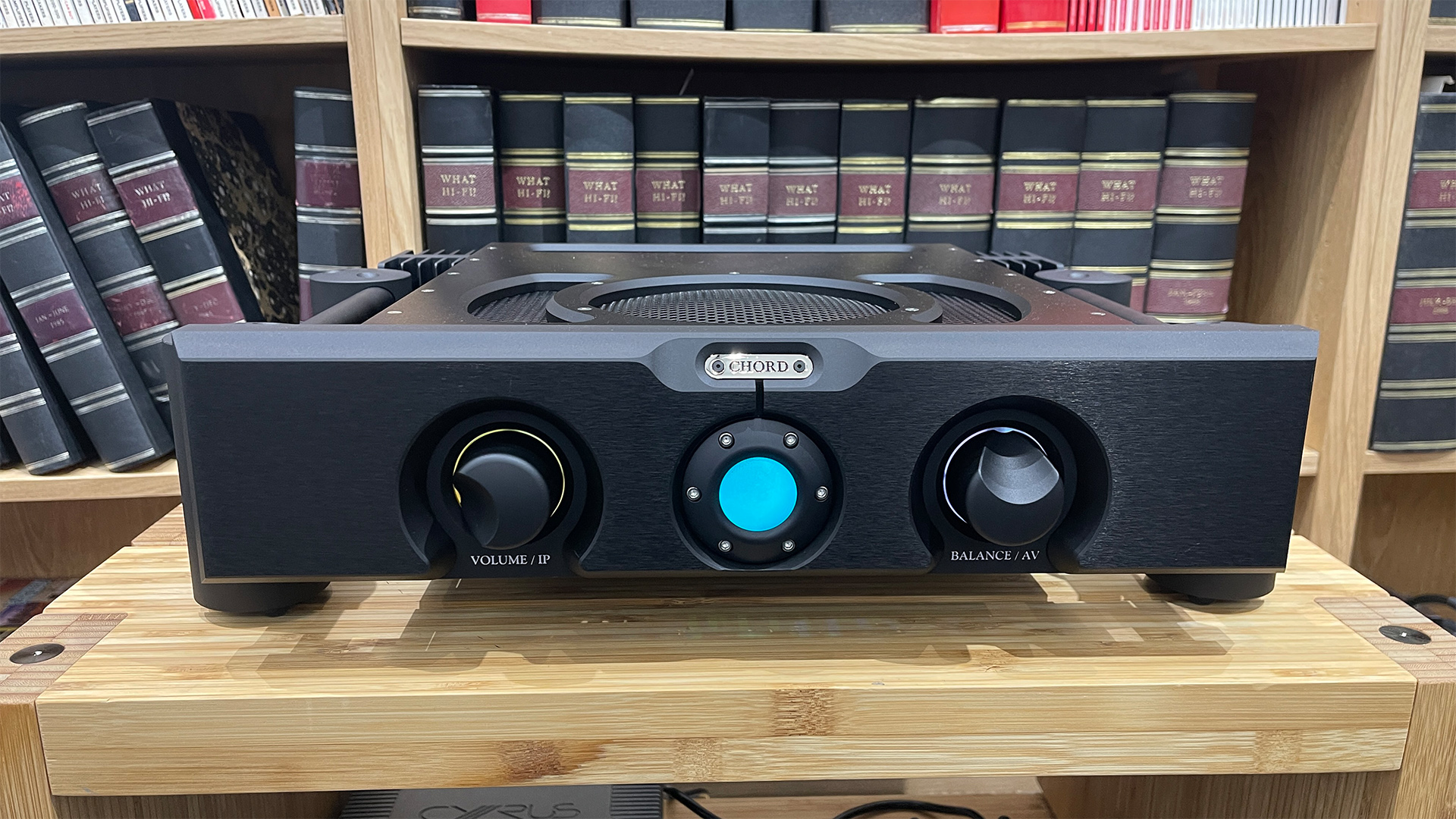
What Hi-Fi? has reviewed a string of premium integrated amplifiers recently, and the theme that runs through them all is the desire to pack as much as possible into that one box. It plays to the neatness and lack of clutter that forms the innate appeal of such designs. Phono stages have become standard inclusions, and it has become usual to find tone controls, headphone outputs and DAC modules specified too. Some have the option of streaming smarts built-in to provide an even neater system solution.
And then there is the Chord Ultima Integrated; a minimalist unit with just four line-level inputs and none of the trimmings. Has Chord Electronics got it wrong? We’re about to find out.
Features & connectivity
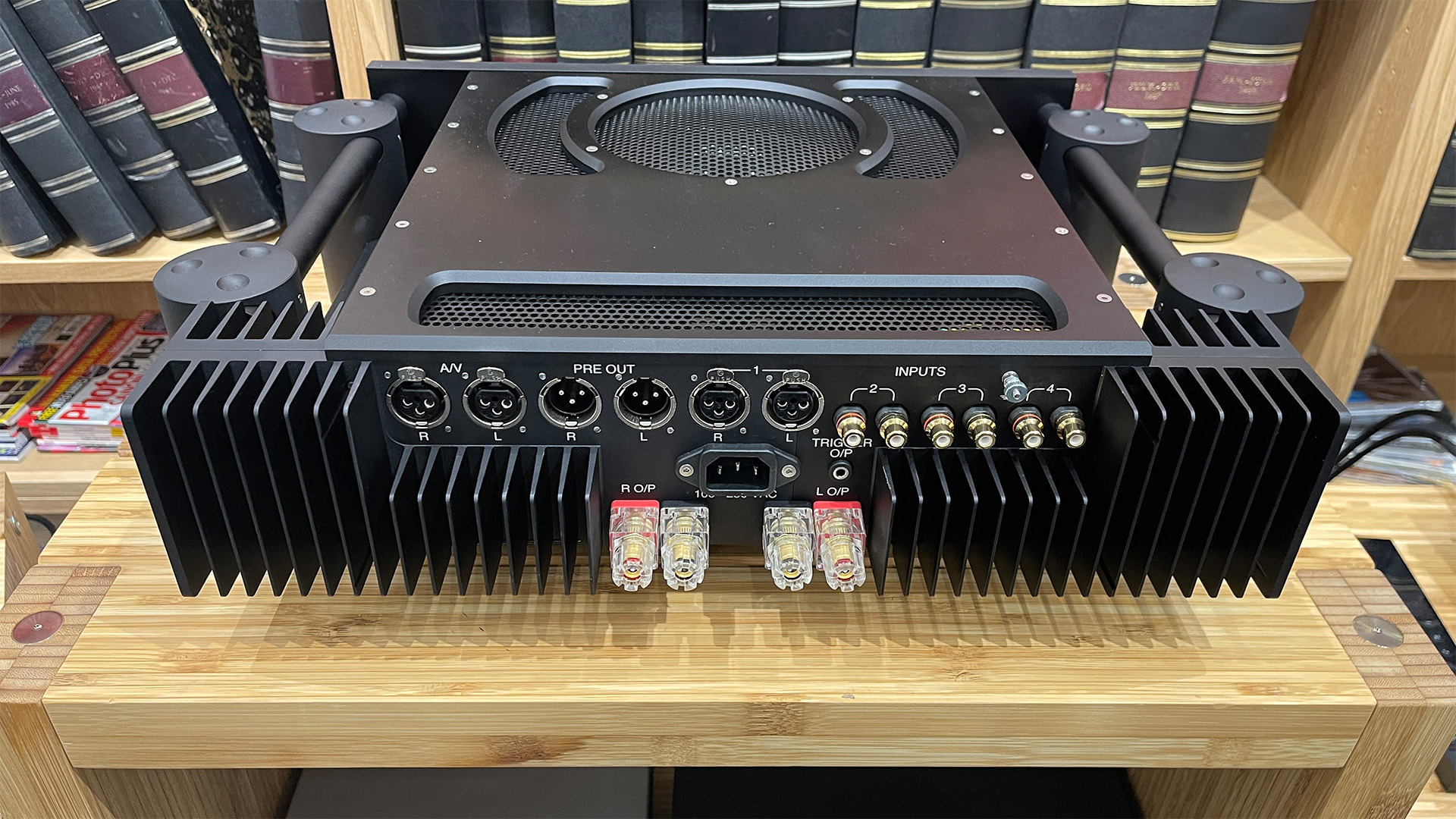
We reviewed the company’s excellent Ultima Pre 3/Ultima 6 power amplifier combination in mid-2022 and this integrated is essentially those two packed into a single box. It has a bit less power (125 watts per channel vs 180 watts for the Ultima 6 power amplifier) and has gone through a rationalisation resulting in the loss of a balanced XLR input and a single-ended preamp output. As it stands, the Ultima Integrated has four line-level inputs, one of which remains a balanced XLR, an AV input that bypasses the volume control and a balanced XLR preamp output, should you feel the need to upgrade.
This minimalist approach has made the Ultima Integrated one of the most straightforward amplifiers we’ve reviewed in years, and it takes mere minutes to get it working in our system. The controls are as simple as they come, but note that pressing the volume dial changes input with the colour of the LED ring behind it signifying the one chosen. That LED ring can glow red, yellow, green or blue as the unit switches from Input 1 to Input 4. It is a neat system but may be an issue for the colour-blind. The other large rotary dial balances the left and right channels and works well enough, but it would be nice to have an indent to confirm that it is centralised. The remote handset is a neat metal unit. It is easier to use than some of Chord’s previous efforts and nice to hold.
Build & design
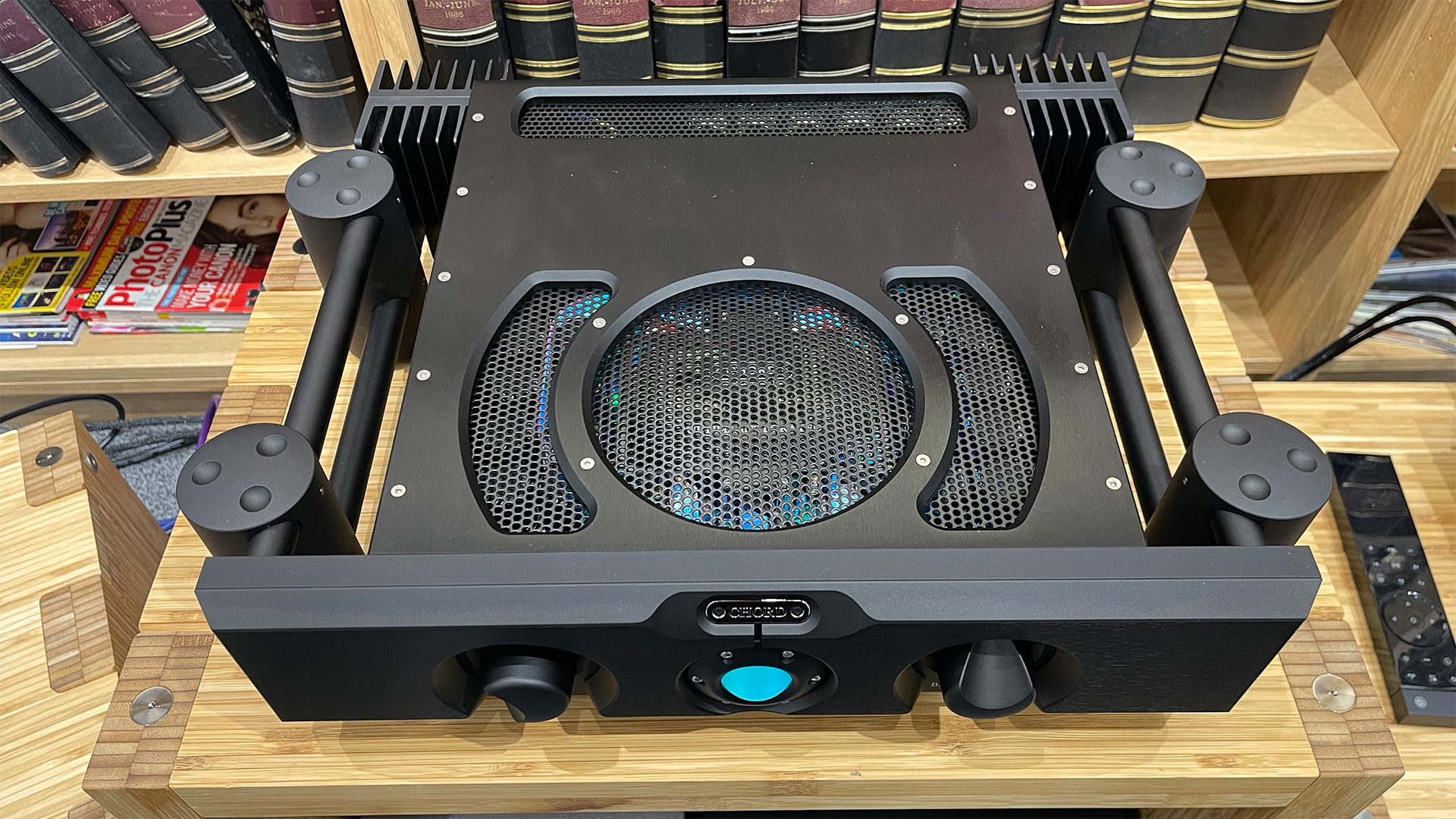
The Ultima Integrated’s thick aluminium casework is heavily sculptured in true Chord tradition. There are so many neat details here from the central power globe that glows in different colours depending on the amplifier’s status to the intricately-machined top panel vents. It all adds up to a sense of visual drama that no rival we’ve tested can match. This is something the company has always done well. Build quality is as good as demanded at this elevated price with the amplifier feeling impressively solid and well-finished.
Look inside and you will find all the company’s core amplification technologies in place. It starts with a high-frequency power supply design that has always differentiated Chord from the majority of its rivals. Rather than use the conventional high-end approach of a large mains transformer feeding a bank of large reservoir capacitors all working at mains frequency, Chord’s sophisticated approach is claimed to deliver a cleaner, more stable power feed. Practically, such high-frequency power supplies tend to be smaller and lighter than conventional alternatives and so are easier to package. Take a close look at this amplifier and you will find that the size of the casework housing the electronic circuitry is remarkably modest.
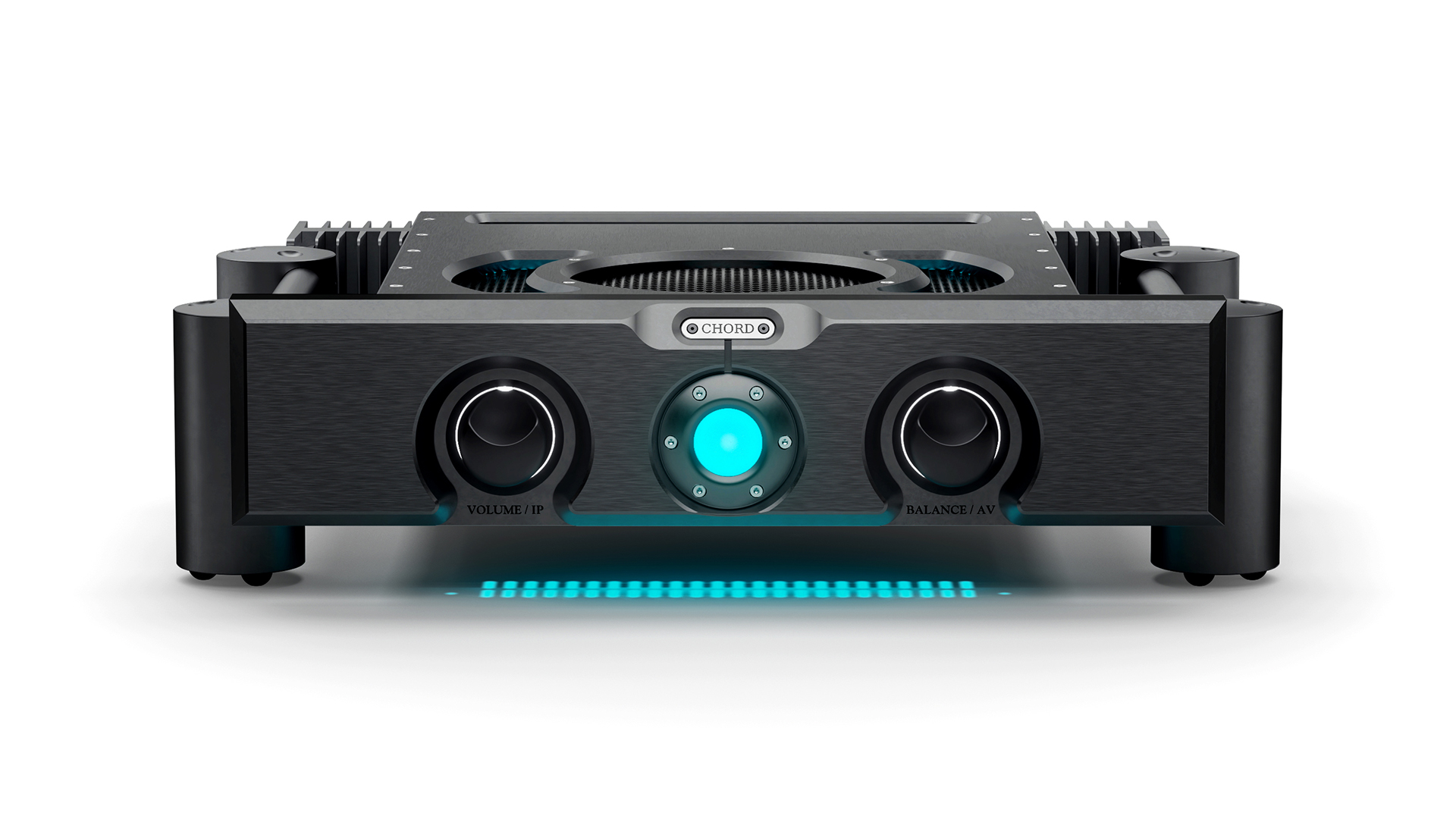
Type Integrated
Power 125W per channel
Phono stage? No
Inputs 4 x Line level (3 x single-ended/1 x balanced XLR), AV bypass (balanced XLR)
Outputs Pre-out (balanced XLR)
Bluetooth? No
Headphone output? No
Dimensions (hwd) 13 x 48 x 38 cm
Weight 14.75kg
The amplifier’s audio circuitry is Class A/B in nature, and the engineers have worked hard to maintain signal purity throughout. It starts with all the inputs being buffered and filtered to minimise degradation caused by radio frequency interference and continues with a carefully configured signal path and a generous power supply arrangement. The amplification sections use Chord’s latest dual feed-forward error correction circuit, which monitors and corrects distortion before it reaches the output stage, leading to more accurate results. That’s the claim anyway.
A product at this level positively demands a top-quality partnering system. Our sources are the Naim ND555/555 PS DR music streamer, a Macbook Pro/Chord Hugo TT combination and a Technics SL-1000R/Kiseki Purpleheart MC record player. The Ultima Integrated is a line-level unit, so we use our usual Cyrus Phono Signature/PSX 2 phono stage to perform the equalisation and additional amplification duties. We try a variety of speakers during the testing process, including our reference ATC SCM50, Wilson Benesch’s Discovery 3Zero (review to come soon) and Wharfedale’s Aura 3 floorstanders.
Sound
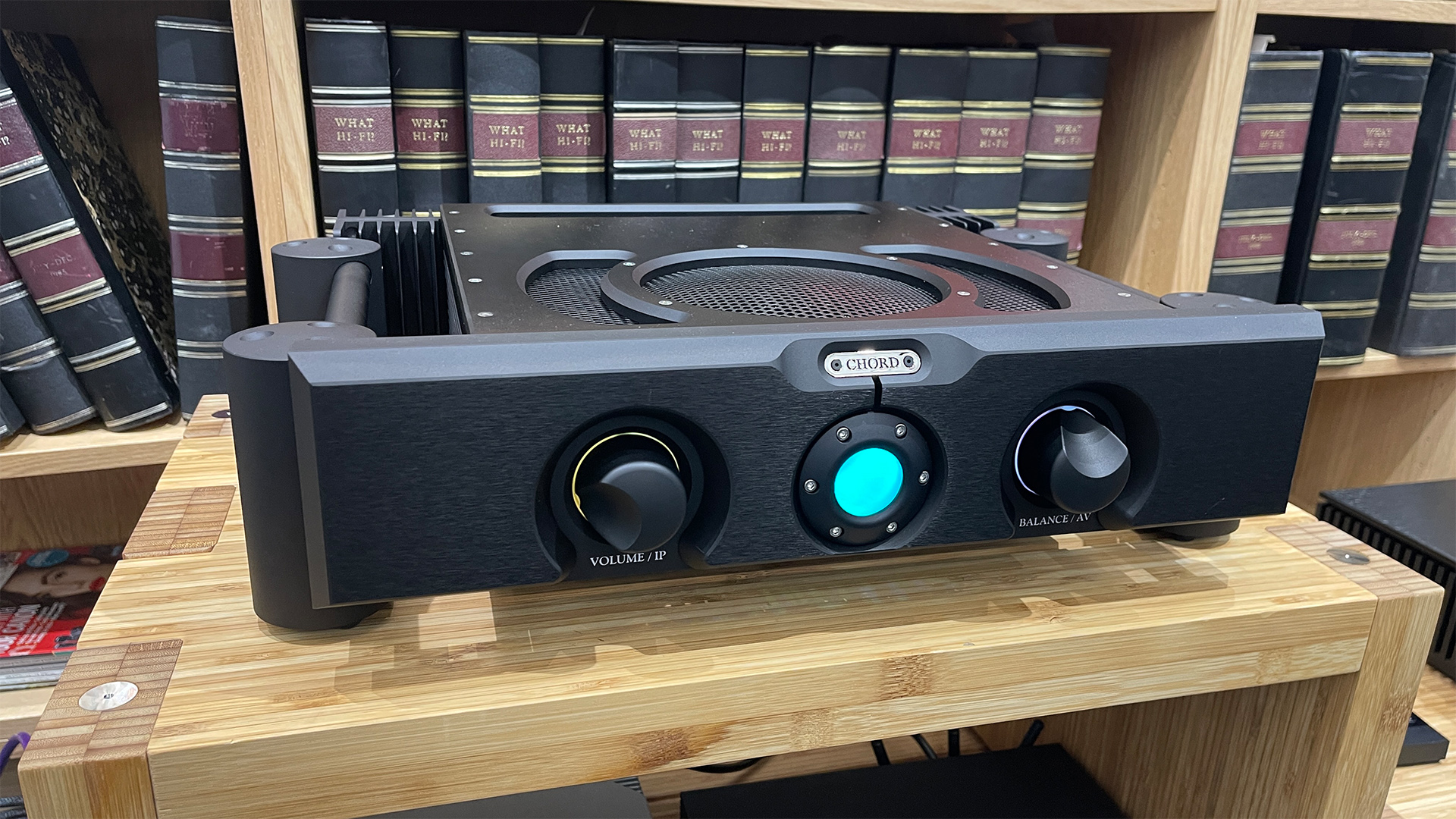
Chord’s earlier generations of amplifiers always impressed to a greater or lesser degree, but some could also be accused of sounding a little cold and sterile. That isn’t a charge that can be levelled at the new-generation models we’ve heard. The Ultima Integrated combines the precision and speed of the older designs but renders the sound with a naturalness that eluded those early efforts, and most of the current competition for that matter.
As we listen to Holst’s Planet Suite it is hard not to be impressed by the scale and clarity of the Ultima’s sound. It is clean without ever sounding hard, with the leading edges of notes crisply defined. The orchestra is laid out in front of us with stability; each instrument is given space to breathe and securely locked in place, even when the music becomes dense. We love the effortless fluidity of this amplifier’s dynamics and the responsive way it reacts to any slight shifts in intensity or level.
Tonally, the Chord is even, though the brand’s sonic signature prioritises articulation over qualities such as richness and authority. Some may prefer the warmer, fuller presentation of rivals such as Mark Levinson’s No.5805 or the cheaper but still excellent PMC Cor. Still, there is no denying the Ultima Integrated’s free-flowing nature or ability to differentiate between interplaying instrumental strands. We can’t help but admire its composure and control, which give the Ultima a stress-free demeanour even when it is put under the cosh. Admittedly, this Chord doesn’t quite deliver dynamic contrasts with the heft of more conventional rivals, but equally, they struggle to match its agility and detail retrieval skills.
We switch to The xx’s Angels and the Ultima continues to impress with its clarity and insight. It conveys the group’s intimate vocals with care, shading the dynamic nuances well and rendering vocal textures convincingly. Here, the amplifier comes across as unforced and pure, leaving little of its sonic signature imprinted onto the sound. The song’s combination of prominent vocals and a sparse but beautiful instrumental backdrop works well with the amplifier’s hands-off approach to music replay.
This impression continues when we switch to Triumphant Winning! by DJ Denz The Rooster. The Ultima Integrated’s revealing nature shows the shortcomings in the production but doesn’t go so far as to make a meal of things. We are fully aware of the recording’s limitations, but equally, the amplifier is happy to let the music’s innate energy and rhythmic drive shine through. In absolute terms, the Chord doesn’t track the music’s rhythms with the skill of the PMC Cor or a (considerably cheaper) Naim Supernait 3, but it still manages to deliver plenty of entertainment. The track’s chunky bass shows off the Ultima’s grip at low frequencies and its ability to punch hard when required. Higher up the frequency range there is no shortage of slam as the Chord flexes its muscle.
Verdict
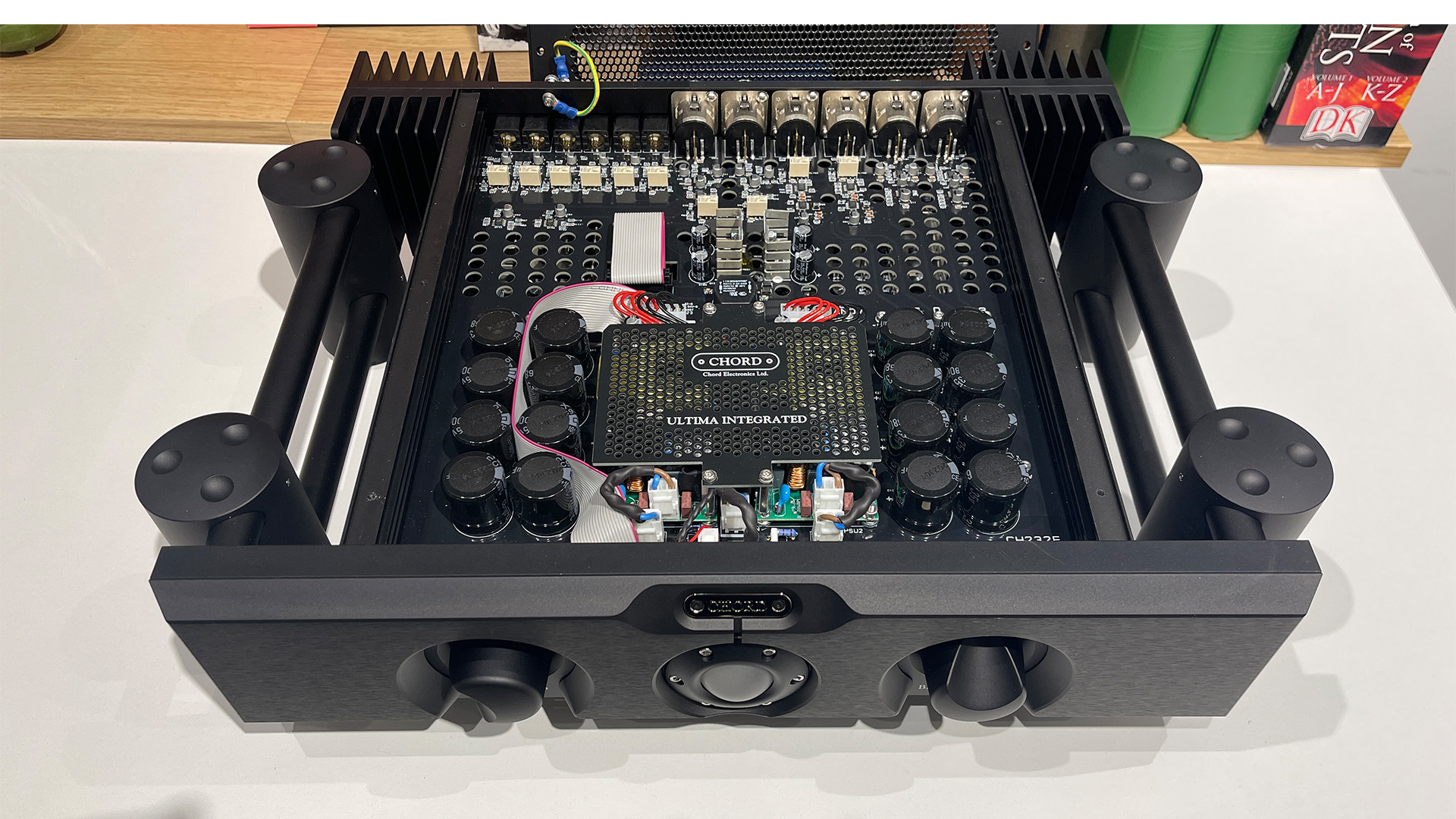
This integrated amplifier succeeds in delivering a large dose of the pricier Ultima pre/power’s performance in a more convenient and affordable package. It is a refreshingly straightforward product to use, and when partnered with a similarly talented system is capable of weaving a wonderfully spellbinding sound. So, back to our original question – has Chord got it wrong? We don’t think so.
SCORES
- Sound 5
- Build 5
- Features 3
MORE:
Read our review of the Mark Levinson No.5805
Also consider the PMC Cor
Read our Luxman L509X review
Best stereo amplifiers: the best integrated amps for every budget







